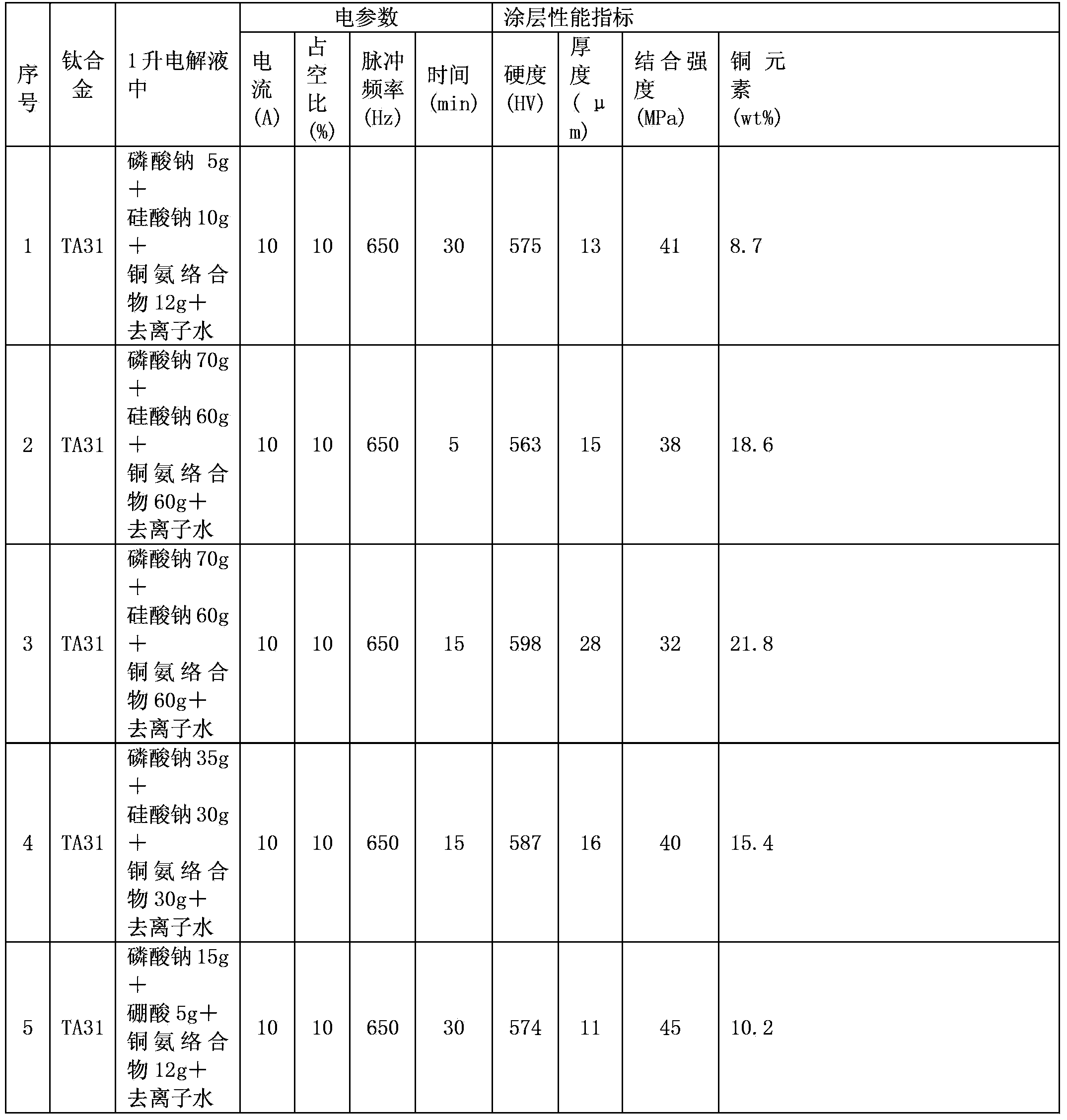Preparation method of nanometer coating for reducing marine organism adhesion on titanium alloy surface
A nano-coating, titanium alloy technology, applied in the direction of surface reaction electrolytic coatings, coatings, electrolytic coatings, etc., can solve the problems of preventing marine organisms from adhering, accelerating base material corrosion and damage, and reducing the safety and reliability of ships. , to achieve the effects of less pollution, longer service life, and easy manipulation
- Summary
- Abstract
- Description
- Claims
- Application Information
AI Technical Summary
Problems solved by technology
Method used
Image
Examples
Embodiment Construction
[0019] The invention is a preparation method of nano-coating for reducing the adhesion of marine organisms on the surface of titanium alloy. The copper-ammonia complex is added to the electrolyte, and the copper-ammonia complex is combined with sodium phosphate and sodium silicate or boric acid. And under the set electrolysis conditions, low-toxic cuprous oxide Cu 2 O and titanium dioxide TiO with nanocrystalline and amorphous structures 2 Ceramic insulating coating, which can greatly reduce the adhesion ability and area of barnacles, mussels, and oysters, and prolong the service life of titanium alloys in seawater.
[0020] The preparation method of the nano-coating of the present invention comprises the pretreatment to the surface of the titanium alloy, the preparation of the nano-coating of the titanium alloy in the electrolyte and the post-treatment of the nano-coating, wherein the pre-treatment is degreasing, degreasing, During the cleaning process, the electrolyte con...
PUM
 Login to View More
Login to View More Abstract
Description
Claims
Application Information
 Login to View More
Login to View More - R&D
- Intellectual Property
- Life Sciences
- Materials
- Tech Scout
- Unparalleled Data Quality
- Higher Quality Content
- 60% Fewer Hallucinations
Browse by: Latest US Patents, China's latest patents, Technical Efficacy Thesaurus, Application Domain, Technology Topic, Popular Technical Reports.
© 2025 PatSnap. All rights reserved.Legal|Privacy policy|Modern Slavery Act Transparency Statement|Sitemap|About US| Contact US: help@patsnap.com


